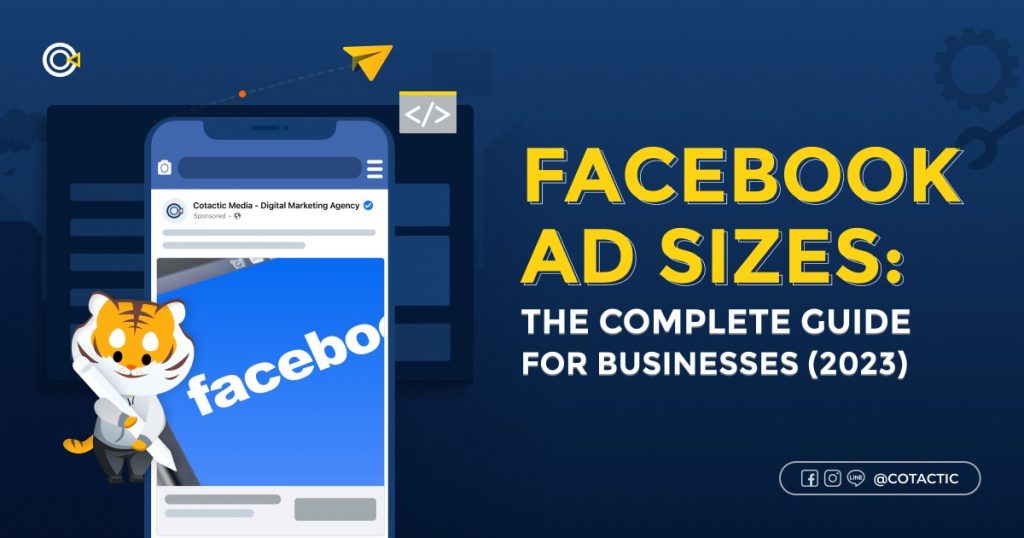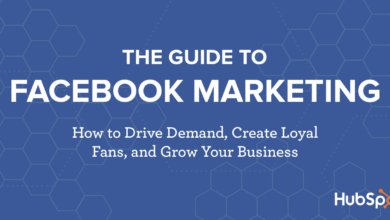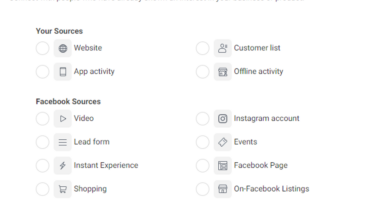
The Full Guide to Facebook Ad Sizes Specs
The full guide to Facebook ad sizes specs is your comprehensive resource for mastering ad dimensions on Facebook. Understanding these specifications is crucial for maximizing ad visibility, engagement, and ultimately, campaign success. We’ll delve into various ad formats, from image and video to carousel and interactive ads, exploring the ideal sizes for different placements and devices.
This guide covers everything from image ad sizes for the Facebook feed and stories to video ad dimensions and carousel ad specifications. We’ll also discuss mobile-specific sizes, technical specifications, and considerations for ad placement. Get ready to optimize your Facebook ad campaigns for optimal performance!
Introduction to Facebook Ad Sizes and Specs
Understanding Facebook ad sizes and specifications is crucial for effective advertising campaigns. Proper sizing ensures your ads are visually appealing and impactful, maximizing visibility and engagement with your target audience. Mismatched dimensions can lead to your ad appearing distorted or cropped, hindering its effectiveness and potentially driving away potential customers. This guide dives deep into the various ad formats and their optimal sizes to help you create campaigns that truly resonate with your audience.The impact of ad size on performance is significant.
A well-designed ad, correctly sized for the platform, is more likely to grab attention, prompting users to click and interact. Conversely, an ad that’s too small, or poorly proportioned, might be overlooked or dismissed, ultimately decreasing its effectiveness and potentially lowering your return on investment. This guide details the crucial aspects of Facebook ad sizing, enabling you to tailor your campaigns for optimal performance.
Facebook Ad Formats and Supported Sizes
Facebook supports a diverse range of ad formats, each with specific size recommendations for optimal visual impact. This variety allows advertisers to tailor their messaging and visuals to their target audience and campaign objectives. Understanding these formats is key to creating engaging and effective campaigns.
- Image Ads: These are fundamental to Facebook advertising. Image ads utilize static visuals to communicate a message. Facebook recommends specific aspect ratios and dimensions for different placements, ensuring your ad appears as intended across various devices and screen sizes. Following these recommendations leads to better visibility and engagement rates. For instance, a 1200x628px image might be optimized for a feed post, while a 1080x1080px image might be better for a story format.
Advertisers should consider the intended placement and device when selecting the optimal size for their image ads.
- Video Ads: Video ads offer dynamic and engaging content, often leading to higher viewer engagement. Facebook offers a range of video formats and sizes, optimized for different placements and devices. Advertisers should consider the video’s length, aspect ratio, and resolution when choosing the appropriate size to maximize impact. Videos longer than 60 seconds might be better served in different formats than shorter ones.
Specific video sizes are optimized for mobile and desktop viewing, ensuring your message is clear and engaging regardless of the device.
- Carousel Ads: These ads present multiple images or videos in a scrollable format, offering a more detailed presentation of products or services. Carousel ads are effective for showcasing multiple options or highlighting different aspects of a product. Facebook provides guidelines on the optimal sizes for each image or video in the carousel, ensuring a consistent visual experience. The aspect ratio for each image or video within the carousel should be similar to maintain visual harmony and engagement.
Advertisers need to consider the number of items in the carousel and ensure each image or video is adequately sized and visually appealing.
Best Practices for Choosing the Right Ad Size
Choosing the right ad size is a crucial step in maximizing your Facebook ad campaign’s effectiveness. Advertisers should carefully consider their campaign objectives, target audience, and chosen ad format when making their selection.
Figuring out the perfect Facebook ad sizes can be tricky, and a comprehensive guide is essential. Knowing the optimal dimensions is crucial for maximizing visibility. But to really nail your online presence, understanding how Google interprets meta tags for SEO is equally important, as detailed in this insightful piece: google meta tags for seo what does google actually understand.
Ultimately, a well-structured approach to both Facebook ad sizes and SEO best practices is key for achieving a strong online presence. So, armed with the knowledge from this guide, you can craft ads that resonate and reach the right audience.
- Align Size with Ad Objective: Different ad objectives might necessitate different sizes. For instance, an ad focused on brand awareness might benefit from a larger, more visually striking image or video, whereas an ad aimed at driving website traffic might benefit from a smaller, more concise image. Advertisers should consider the specific goals of their campaign to determine the most appropriate size for their ad.
- Consider Target Audience: The target audience plays a vital role in selecting the right size. Advertisers should consider the demographics and preferences of their target audience to select an ad size that resonates with them. For example, a smaller ad might be appropriate for younger audiences who prefer a concise message, while a larger ad might be better suited for a broader, older audience who might need more information.
- A/B Testing: Experimentation is key to optimizing your ad performance. Advertisers should conduct A/B testing with different ad sizes to determine which performs best. This iterative process allows you to refine your approach and maximize the return on your investment.
Image Ad Sizes
Images are a cornerstone of effective Facebook ad campaigns. They grab attention, convey your message visually, and often drive higher engagement rates than text-based ads alone. Understanding the specific dimensions Facebook recommends for various placements is crucial for ensuring your ads display optimally and maximize their impact.
Image Ad Sizes for Different Placements
Facebook offers a range of ad sizes to accommodate various placements, from the News Feed to Instagram Stories. Adhering to these dimensions is essential for clear and consistent visuals across the platform.
| Placement | Recommended Dimensions (pixels) | Aspect Ratio | Implications of Deviation | Visual Appeal Example |
|---|---|---|---|---|
| Facebook News Feed | 1080×1080 | 1:1 | Ads that are too small may appear blurry or pixelated on the feed. Ads significantly larger might get cropped or lose critical information. | A clean, minimalist design featuring a striking image of a product or service, with a strong call to action overlaid in a contrasting color. |
| Instagram Feed | 1080×1080 | 1:1 | Similar to the News Feed, maintaining the recommended size prevents distortion and ensures optimal viewing. | A visually appealing image of a person using the product or service, highlighting its key benefits in a simple and engaging manner. |
| Instagram Stories | 1080×1920 | 9:16 | Images outside the 9:16 ratio will be stretched or cropped, impacting the overall aesthetic and readability of the ad. | A dynamic image sequence showcasing the product’s key features and benefits, or a visually captivating slideshow showcasing different product angles or customer testimonials. |
| In-Stream Video Ads | 1920×1080 | 16:9 | Using a different aspect ratio will cause the image to be distorted or cropped. | An engaging video showcasing the product or service, with captivating visuals and a compelling narrative. |
Image Quality and File Formats
The quality of your image directly affects how your ad is perceived. Using high-resolution images and appropriate file formats are paramount.
- High Resolution: Ensure your images are sharp and clear, avoiding pixelation. Use high-resolution files (300 DPI or higher) to maintain quality at different sizes.
- File Formats: JPEG is a widely used format for images, suitable for most scenarios. PNG is another good option for images with transparency. Avoid using GIF unless you’re using a very simple, looping animation. Be mindful of file size; smaller files load faster, enhancing user experience.
Video Ad Sizes

Video ads are a powerful tool for grabbing attention on Facebook, and understanding the right sizes and formats is crucial for maximizing their impact. Knowing the dimensions and aspect ratios tailored for different placements ensures your video ad is seen and understood effectively. Choosing the appropriate video format, resolution, and length directly influences how your audience interacts with your ad.Facebook’s video ad platform offers flexibility in formats and placements, allowing you to target different user experiences.
From the engaging stories format to the in-stream video placements, each has specific dimensions to optimize visual appeal and engagement.
Video Ad Sizes for Facebook
Understanding the ideal dimensions for your Facebook video ads is essential for optimal visibility and user engagement. Different placements require specific dimensions to ensure your video is displayed correctly and effectively captures attention.
| Placement | Width (pixels) | Height (pixels) | Aspect Ratio | Notes |
|---|---|---|---|---|
| Facebook Feed | 1200 | 628 | 1.91:1 | Landscape orientation is recommended for maximum impact in the feed. |
| Facebook Stories | 1080 | 1920 | 16:9 | Vertical orientation is best for the engaging stories format. |
| Facebook In-Stream Video | 640 | 360 | 16:9 | These are commonly used dimensions for in-stream ads, allowing for seamless integration within the user experience. |
Video Ad Formats
The choice between square, landscape, and portrait video formats depends heavily on the specific placement. Each format presents unique advantages in terms of visual impact and user experience.
- Square video ads are well-suited for the Facebook feed, offering a balanced visual experience. They provide a strong visual presence and are easily digestible on the platform.
- Landscape video ads are generally more effective in the feed and on in-stream placements, allowing for a wider view of the content and often better suited for showcasing products or services.
- Portrait video ads are excellent for Facebook Stories, where the vertical orientation is the standard. This format often works well for conveying narratives or presenting information concisely.
Ideal Video Aspect Ratios
The aspect ratio directly affects how your video is displayed on different placements. Optimizing the aspect ratio ensures your video maintains its intended visual appeal and clarity.
Knowing the perfect Facebook ad sizes is crucial for maximizing impact. It’s all about getting the visuals just right, and a deep dive into the full guide to Facebook ad sizes specs will help you nail that. This week’s Xceed Marketer of the Week, Ilana Parker, marketing director, highlights the importance of understanding these specs, demonstrating the significant impact on campaign performance.
Check out her insightful profile here to learn more about her approach. Ultimately, a strong understanding of Facebook ad sizes specs is key for any successful campaign.
- 16:9 (Landscape) is commonly used for Facebook feed and in-stream videos, providing a wide viewing experience and allowing for more visual elements to be included.
- 9:16 (Portrait) is ideal for Facebook Stories, emphasizing the vertical nature of the format. This helps create an immersive and engaging viewing experience.
- 1:1 (Square) is suitable for the Facebook feed and is a good option when a balanced visual approach is desired.
Video Resolution and File Compression
Video resolution and file compression significantly impact the quality and loading time of your ads. These factors directly influence user engagement and perception of your brand.
- High resolution videos, while visually appealing, can increase file size and loading times, potentially reducing engagement. A balance is needed between quality and performance.
- Efficient file compression techniques are essential for reducing file sizes without compromising video quality. Choosing the right compression method ensures your video loads quickly and plays smoothly.
Video Length and Ad Effectiveness
Video length directly affects ad effectiveness and engagement. Finding the optimal length is crucial to capture user attention and achieve your campaign goals.
Knowing the perfect Facebook ad sizes is crucial for optimal visibility. But, to truly maximize your campaign’s impact, understanding Facebook conversion tracking with Facebook pixel is equally important. Facebook conversion tracking with Facebook pixel helps you pinpoint which ads drive real results. Ultimately, understanding both ad sizes and conversion tracking will lead to more effective Facebook ad campaigns, allowing you to get the most out of your marketing budget.
This full guide to Facebook ad sizes specs will cover all the details.
- Shorter videos (under 60 seconds) are often more effective for grabbing attention and delivering a concise message. They are suitable for many placements, particularly for in-stream ads.
- Longer videos (over 60 seconds) can provide more in-depth information but require careful attention to maintaining user engagement throughout. These can be effective in the feed, particularly if well-structured and compelling.
Carousel Ad Sizes
Carousel ads are a powerful way to showcase multiple products or features within a single ad unit. They’re engaging because they offer a variety of options in a compact space, making them a compelling choice for many advertisers. Their ability to present a selection of items encourages viewers to explore more of what you offer.Understanding the specific dimensions and best practices for carousel ads is crucial for maximizing their impact.
Properly designed carousel ads can effectively communicate a brand’s message and encourage conversions.
Carousel Image Dimensions
Carousel ads come in various sizes, dependent on the placement and format. Advertisers must tailor their designs to optimize the visibility and engagement of their ads within different ad placements. The table below Artikels the common dimensions for carousel images.
| Placement | Width (pixels) | Height (pixels) |
|---|---|---|
| Feed | 1080 | 1920 |
| Stories | 1080 | 1920 |
| In-stream Video | 1920 | 1080 |
| Canvas | 1080 | 1920 |
Note that these dimensions are guidelines. Facebook may adjust them slightly, so always test different variations to ensure optimal display.
Recommended Aspect Ratios
Maintaining consistent aspect ratios across all carousel images is essential for a cohesive visual experience. A good rule of thumb is to use a 1:1 ratio or a 9:16 ratio for the images. These ratios maintain a professional and well-balanced presentation. Using these ratios helps create a visually harmonious ad that is easy for the user to scan and understand.
Impact of Number of Images
The number of images in a carousel directly affects the overall ad size. More images require more space, and the ad layout may need to adjust. However, more options are often a plus. Facebook’s platform adapts to accommodate the varying numbers of images within the carousel.
Best Practices for Visually Engaging Carousel Ads, The full guide to facebook ad sizes specs
Creating visually appealing carousel ads requires careful consideration of design elements. High-quality images and consistent branding are key.
- High-quality images are crucial for a positive user experience. Blurry or low-resolution images can detract from the ad’s overall impact and reduce engagement.
- Consistent branding across all carousel images creates a unified and memorable brand experience. This consistency helps build brand recognition and trust with the viewer.
- Compelling visuals are essential. Use clear, concise, and engaging imagery that directly relates to the products or services being advertised. This helps quickly capture the viewer’s attention.
Content Structure within Carousel Ads
A well-structured carousel ad effectively guides the viewer through the product or service information.
- Each image should have a clear focal point that draws the user’s attention. Using a distinct color scheme and layout for each image helps viewers quickly distinguish one product from another. This clear division and focus helps viewers understand the product options presented.
- Use concise, descriptive captions or headlines that complement each image. This ensures the message is clear and easily understood. Use concise language to convey the core benefit of each product.
- Include calls to action on each image, guiding the user toward the desired action, such as visiting a website or making a purchase. A clear call to action increases the chances of conversion.
Display Ad Sizes
Display ads are a crucial component of Facebook advertising, allowing businesses to reach a wider audience through visually engaging formats. They are highly versatile, offering a range of sizes and placements to cater to diverse advertising objectives. Understanding the specifications for different display ad formats and placements is key to optimizing campaign performance and maximizing return on investment.
Display Ad Sizes and Placements
Display ads on Facebook come in various formats, each with specific dimensions and placements. This table Artikels common display ad sizes and their corresponding placements on the platform. Proper selection of ad sizes is critical to ensuring visibility and maximizing the impact of your ad campaign.
| Ad Format | Dimensions (Pixels) | Facebook Placements | Optimal Use Cases |
|---|---|---|---|
| Standard Banner | 728×90, 300×250, 300×600 | News Feed, Right Column, In-Stream Videos | Brand awareness, driving website traffic, general product promotion. |
| Leaderboard | 728×90 | Top of page, Right Column | High-impact branding and awareness, promoting major offers. |
| Medium Rectangle | 300×250 | News Feed, Right Column, In-Stream Videos | Suitable for showcasing product details, and call to actions |
| Large Rectangle | 336×280 | News Feed, Right Column | Displaying detailed product information, effective for promotions. |
| Square | 250×250 | News Feed, Right Column, In-Stream Videos | Ideal for showcasing a product visually, or a single promotional offer. |
Different Types of Display Ads
Facebook offers various display ad formats beyond basic banner ads. Understanding these diverse options allows advertisers to choose the most effective format for their specific campaign goals.
- Image Ads: These are static image ads, primarily used for brand awareness and showcasing a visually appealing product or service.
- Video Ads: Video ads are increasingly popular, allowing for dynamic storytelling and engaging user attention. They are suitable for showcasing product demos, or introducing a new service. They often include calls to action to encourage interaction.
- Interactive Ads: These ads incorporate interactive elements, such as polls, quizzes, or games, to increase engagement and user interaction. They are especially effective for driving higher click-through rates, which in turn generate more conversions.
- Carousel Ads: These ads allow for multiple images or videos to be displayed within a single ad unit, offering a greater variety of visual content and increasing the likelihood of user engagement.
Display Ad Specifications
Ad specifications are crucial for successful ad campaigns. Advertisers must ensure their ads meet Facebook’s specifications to guarantee optimal display and avoid rejection. A few key factors are vital to remember when creating ads.
- File Formats: Use image formats like JPG, PNG, or GIF, and ensure the images are high resolution and meet Facebook’s quality standards.
- Image Aspect Ratios: Advertisers should ensure the aspect ratio of their images aligns with the ad format to maintain visual appeal and prevent distortion on different placements.
- File Sizes: Keep file sizes small to minimize loading time and ensure smooth display across various devices. Excessive file sizes can negatively impact user experience, potentially affecting click-through rates and conversions.
- Image Quality: High-quality images are crucial to capture user attention and drive engagement. Low-quality images may not resonate with the target audience and can lead to a poor user experience.
Placement Optimization
The optimal placement for display ads depends on the campaign objective. Different placements offer varying reach and engagement levels. Choosing the right placement can significantly impact the overall performance of your ad campaign.
- News Feed: High visibility and potential for engagement but can be competitive, requiring a well-crafted ad to stand out.
- Right Column: Offers a consistent presence, especially for brands aiming for high visibility, but the level of engagement may be lower compared to the News Feed.
- In-Stream Videos: A highly engaging environment, ideal for video ads aiming to showcase products or services through visual content.
Creating Compelling Display Ads
Crafting compelling display ads is vital for capturing attention and achieving desired objectives. These ads must effectively communicate your message and encourage user interaction. Key strategies for creating engaging ads include:
- Clear Messaging: Communicate your value proposition clearly and concisely. Use compelling headlines and concise descriptions to convey the benefits of your product or service.
- High-Quality Visuals: High-quality images and videos are essential for capturing attention and effectively conveying your message. Use visuals that are visually appealing and resonate with your target audience.
- Strong Calls to Action: Encourage user interaction by including clear and compelling calls to action (CTAs). Use action-oriented verbs and concise language to guide users toward desired actions.
Interactive Ad Sizes
Interactive ads, with their dynamic features and engaging elements, offer a powerful way to capture user attention and drive conversions. They are designed to go beyond static visuals, offering a richer experience that fosters interaction. Understanding the appropriate ad sizes is crucial for optimizing their performance and ensuring a positive user experience.
Interactive Ad Dimensions
Interactive ads come in various forms, each with unique size requirements. These dimensions significantly impact the ad’s effectiveness and visual appeal. Careful consideration of size is critical to the overall success of the ad campaign.
| Ad Type | Width (pixels) | Height (pixels) | Notes |
|---|---|---|---|
| Playable Ads | 500 | 300 | These ads typically include a short game or interactive experience. Ad size needs to accommodate the controls and gameplay elements, often needing a balance between size and gameplay experience. |
| Canvas Ads | 1000 | 600 | Canvas ads allow for complex interactive experiences, often with intricate graphics and user-controlled elements. Their larger dimensions enable more dynamic content and engagement. |
| Instant Experience Ads | 1080 | 1920 | Optimized for high-resolution displays, instant experience ads often integrate with the platform’s functionality, offering a more immersive experience. Larger sizes allow for more detail and interactivity. |
Impact of Ad Size on User Experience
The size of an interactive ad directly affects the user experience. A well-designed interactive ad, regardless of size, provides intuitive controls and engaging content. A too-small ad might make interactions clunky, while a too-large ad could feel intrusive and negatively impact the overall browsing experience.
Example of Interactive Ads
A playable ad for a mobile puzzle game, for instance, could use a 500×300 dimension, allowing for basic gameplay controls while still maintaining visibility. Conversely, a canvas ad promoting a virtual tour might benefit from a larger size (e.g., 1000×600) to accommodate a full-screen experience, featuring detailed graphics and multiple interactive elements.
Technical Considerations for Interactive Ads
The technical aspects of creating interactive ads are intertwined with the size requirements. Frameworks and tools are essential for building responsive designs that adapt to various screen sizes and resolutions. Using appropriate design principles for interaction, clarity, and visual hierarchy are key. For example, buttons and interactive elements need to be appropriately sized and spaced for clear functionality.
Carefully consider the loading times and responsiveness of the ad’s interactive components, particularly with larger sizes. Code should be optimized to ensure smooth performance, even with complex interactions. Accessibility features are vital, including proper alt text for interactive elements and appropriate color contrast for readability.
Mobile Ad Sizes

Mobile advertising is a cornerstone of modern marketing strategies. Reaching consumers on their phones requires a nuanced understanding of the various screen sizes and formats. Ignoring mobile-specific ad sizes can lead to significant visibility issues and missed opportunities for engagement. This section dives into the specifics of mobile ad sizes, their implications, and best practices for maximizing impact.Mobile devices come in a wide array of screen sizes, from compact smartphones to larger tablets.
This diversity necessitates tailoring ad creatives to optimize display and functionality. A visually appealing ad on a small phone screen might look cramped and unreadable on a tablet. Understanding the different screen sizes and their corresponding ad dimensions is crucial for ensuring that your ads are both engaging and visible.
Importance of Mobile-Specific Ad Sizes
Mobile ad sizes are crucial because they ensure that ads render correctly and effectively on different mobile devices. This includes adjusting the dimensions and aspect ratios to avoid distortion, cropping, or reduced visibility. Failing to optimize for mobile can result in a poor user experience and lower engagement rates. Properly sized ads are essential for a positive user experience, improving ad relevance, and maximizing click-through rates.
Mobile Feed Ad Sizes
Optimizing feed ads for mobile requires careful consideration of the display area and user interactions. Users scrolling through their feeds often have limited time to engage with ads. Consequently, mobile feed ads need to be visually striking and informative in a short amount of time. High-quality images and concise copy are key for grabbing attention and encouraging clicks.
- Recommended sizes for mobile feed ads typically align with the standard aspect ratios for mobile displays. These sizes allow for optimal visual appeal without excessive cropping or distortion.
- The dimensions for mobile feed ads should also be flexible enough to adapt to different mobile screen sizes. This will help ensure consistent visibility across a range of devices.
Mobile Story Ad Sizes
Mobile Stories ads are an emerging format that capitalizes on the ephemeral nature of stories. This format emphasizes engaging visuals and concise messaging. These ads are designed to be quickly scanned and understood.
- Story ads often benefit from vertical formats that mirror the orientation of mobile stories.
- Clear and concise visuals are key to effective engagement. Consider the use of dynamic elements, like animated graphics, to capture attention.
Mobile In-Stream Ad Sizes
In-stream ads, often found within mobile video players, demand specific considerations for visual clarity and user experience. Ads should be unobtrusive and not disrupt the video content.
- In-stream ad sizes need to be compatible with the various video players and mobile operating systems.
- The ads need to fit the display area without significantly affecting the video playback experience.
Best Practices for Designing Mobile Ads
Mobile ad design necessitates a user-centric approach. Focus on simplicity, clear messaging, and compelling visuals.
- Use high-quality images and videos to maximize visual appeal.
- Prioritize clear call-to-actions (CTAs) to encourage engagement.
- Test different ad variations to identify the most effective approach for your target audience.
Comparison of Mobile and Desktop Ad Sizes
A clear comparison of mobile and desktop ad sizes is essential for ensuring consistency in your ad campaigns. Understanding these differences helps optimize the visibility and impact of your ads across various platforms.
| Ad Type | Mobile Dimensions | Desktop Dimensions |
|---|---|---|
| Feed Ads | 1080 x 1920 pixels (or equivalent aspect ratio) | 1200 x 628 pixels (or equivalent aspect ratio) |
| Story Ads | 1080 x 1920 pixels (or equivalent aspect ratio) | 1080 x 1920 pixels (or equivalent aspect ratio) |
| In-Stream Ads | 1080 x 1920 pixels (or equivalent aspect ratio) | 1920 x 1080 pixels (or equivalent aspect ratio) |
Ad Placement Considerations
Choosing the right Facebook ad placement is crucial for maximizing your campaign’s effectiveness. Different placements cater to various user behaviors and ad formats, impacting engagement and ultimately, conversions. Understanding these nuances allows you to tailor your strategy for optimal results. A well-placed ad can resonate with the target audience, increasing brand awareness and driving sales.Understanding the specific environment where your ad appears is vital.
Whether it’s within the News Feed, in a video, or within a carousel format, each location presents a unique opportunity to connect with potential customers. This section delves into the intricacies of ad placements on Facebook, examining their impact on user engagement and ad recall.
Placement-Specific Ad Size Variations
Different Facebook ad placements have specific size requirements. Advertisers need to adhere to these guidelines to ensure their ads appear correctly and effectively. Understanding the variations in size across different placements allows you to optimize your campaign for maximum visibility.
| Placement | Optimal Ad Size (Example) | Key Considerations |
|---|---|---|
| News Feed | Image: 1080 x 1080 pixels; Video: 1280 x 720 pixels | High visibility, but requires attention-grabbing visuals and compelling copy. |
| Stories | Image: 1080 x 1920 pixels; Video: 1080 x 1920 pixels | Short-form content, emphasis on visual appeal, and quick, clear messaging. |
| In-Stream Videos | Video: 1280 x 720 pixels | Engaging video ads that play within other videos; often seen as more engaging. |
| Carousel Ads | Image: 1080 x 1080 pixels per image; Video: 1280 x 720 pixels per video. | Excellent for showcasing multiple products or services; requires visually compelling images or videos. |
| Audience Network | Image: 300 x 250 pixels; Video: 300 x 250 pixels | Reach a wider audience beyond the Facebook platform, with considerations for diverse ad placements and formats. |
Optimal Ad Sizes for Different Placements
The optimal ad size varies depending on the placement. Advertisers should tailor their ad sizes to the specific placement to maximize visibility and impact. Matching ad size with the placement optimizes visual appeal and user experience.
- News Feed Ads: High-resolution images and videos are recommended for optimal visual impact. Larger images often yield higher click-through rates.
- Stories Ads: Vertical orientation is crucial for stories ads, emphasizing mobile-first design. Quick, engaging visuals are paramount. Short videos or animated graphics work exceptionally well in this space.
- In-Stream Ads: In-stream video ads should adhere to the specific dimensions. The video content itself should be highly engaging to maintain viewer interest.
- Carousel Ads: Consistent visuals across all carousel images or videos enhance the user experience. High-quality images are key to maintaining a cohesive look and feel for the ad.
Impact of Ad Placement on Engagement and Recall
Ad placement significantly influences user engagement and ad recall. Users are more likely to engage with ads that seamlessly integrate with the platform’s design and functionality. Consistent placement and format can positively influence user recall of the ad and the advertised product.
“Placement influences how users perceive and interact with the ad. Strategic placement improves ad recall and fosters a stronger connection between the brand and the user.”
Considerations for Choosing the Right Placement
Several factors influence the choice of the optimal placement. Campaign goals, target audience, and budget all play critical roles. Understanding the strengths and weaknesses of each placement is essential for successful campaign management.
- Target Audience: Placement decisions should consider where your target audience spends the most time on Facebook.
- Campaign Goals: Different placements are better suited for different goals. For example, brand awareness campaigns might benefit from a broader reach.
- Budget: Different placements may have different cost implications. Consider your budget and the potential return on investment.
- Ad Format: Certain placements are more suitable for specific ad formats (e.g., carousel ads on News Feed). Matching the ad format to the placement can boost engagement.
Technical Specifications and File Formats: The Full Guide To Facebook Ad Sizes Specs
Facebook ad creatives need to meet specific technical requirements to ensure optimal display and performance. Understanding these specifications is crucial for creating visually appealing and engaging ads that effectively capture user attention. Advertisers who adhere to these guidelines are more likely to achieve their desired results.The technical specifications, from file formats to compression levels, directly influence how your ad appears on different devices and screen resolutions.
This section will delve into the critical aspects of these technical specifications, providing a detailed understanding of image and video formats, compression levels, pixel density, and file size limitations.
Supported Image and Video File Formats
Understanding the file formats supported by Facebook ads is essential for ensuring your creative assets are compatible with the platform. This allows your ads to load quickly and display properly on various devices.
| File Type | Description |
|---|---|
| JPEG (JPG) | A common image format known for its balance of image quality and file size. It’s suitable for photographs and graphics. |
| PNG | A lossless format ideal for images with transparency or complex graphics, like logos or illustrations. |
| GIF | Supports animations, but is generally less suitable for complex images or high-resolution visuals. It’s best for simple animations or icons. |
| MP4 | A versatile video format widely supported by Facebook and compatible with various devices. |
| MOV | Another video format often used for professional video editing. However, ensure compatibility is confirmed. |
Recommended Compression Levels
Optimizing image and video compression is crucial for balancing quality and file size. Higher compression levels often result in smaller file sizes but can reduce image quality.
- For JPEG images, aim for a quality setting that maintains acceptable visual clarity while minimizing file size. A balance between quality and file size is key. Experiment to find the optimal setting for your specific image.
- PNG files, due to their lossless nature, generally don’t require extensive compression. Focus on the file size, without compromising the quality of your design.
- For videos, choose a compression level that balances file size and video quality. Consider using professional video editing software for optimal settings.
Pixel Density Requirements
Maintaining appropriate pixel density ensures that your ads display clearly on different screen sizes and resolutions. A higher pixel density generally leads to a sharper and more detailed image or video.
- Facebook recommends images with a minimum resolution of 1080 x 1080 pixels. This ensures a clear and crisp display on various devices. Higher resolutions are often beneficial for showcasing intricate details.
- For videos, a minimum resolution is generally recommended to achieve optimal viewing experiences on various devices.
Importance of High-Quality Images and Videos
High-quality images and videos are essential for creating visually appealing and engaging Facebook ads. Compelling visuals are critical for capturing user attention and driving engagement.
File Size Limitations and Impact on Ad Loading Speed
Facebook has file size limitations for ads to ensure quick loading times. Large file sizes can negatively impact the user experience by causing delays in ad display.
- File sizes that are too large can significantly impact the loading speed of your ads, potentially leading to a negative user experience. A quick loading ad contributes to a positive user experience.
- Advertisers should be mindful of these limitations to avoid issues that could decrease ad performance. Smaller file sizes generally result in faster loading times and a better user experience.
Conclusive Thoughts
In conclusion, this guide has thoroughly examined the intricate world of Facebook ad sizes and specs. By understanding the nuances of different ad formats, placements, and device considerations, you can craft visually compelling and strategically positioned ads. Remember to tailor your ad sizes to your specific campaign goals and target audience for maximum impact. Armed with this knowledge, you’re well-equipped to elevate your Facebook ad performance to new heights.





